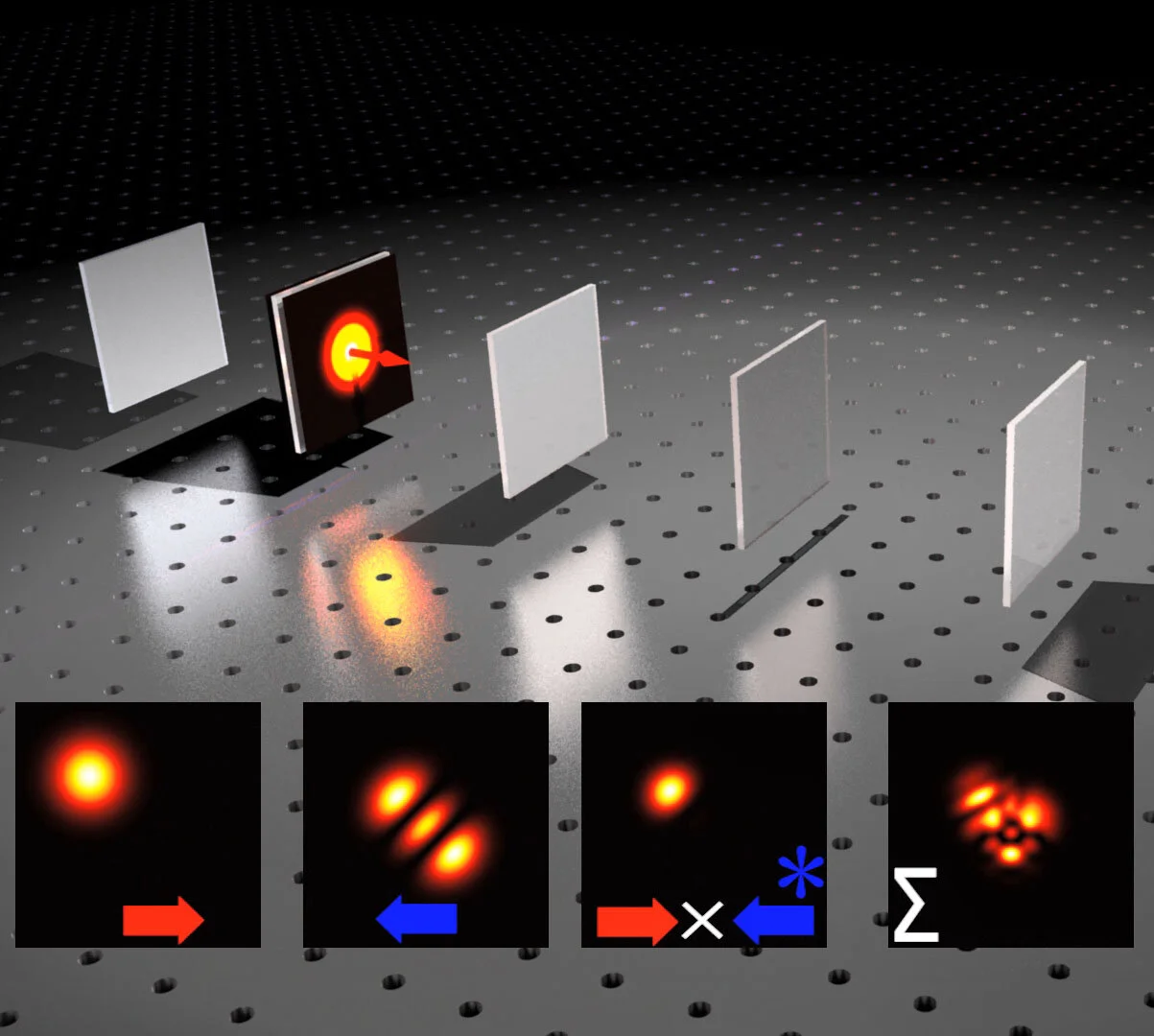Optical research lab at The University of Queensland
Spatial light manipulation
Many applications require light to be spatially shaped or rearranged. A simple example would be a microscope that uses a sequence of lenses to magnify an image. However it is also possible to use more complicated optics to perform more sophisticated transformations. Whatever the application, be it telecommunications, imaging, advanced manufacturing, high-power lasers, or investigations of fundamental phenomena. You often have a light beam coming from your input source (or sources), which must be transformed into a different shape for delivery to the output target plane. We use computer algorithms to design new optical systems that can implement novel spatial transformations. Often using a sequence of pixelated glass plates of varying pixel-by-pixel thickness.
Spatiotemporal light manipulation
It is also possible to shape light beams not just spatially (2D) but also spatially and temporally (3D). In this case you can control not just ‘where’ the light is delivered to the output plane, but ‘where’ and ‘when it is delivered to the output plane. The light is shaped into an arbitrary 3D blob of light which then flies through space at the speed of light to the target. Light enters such a device as a small spot as a short pulse (~100s of femtoseconds), the device then pulls apart and rearranges the input source into an arbitrary 3D shape as it flies through at the speed of light. You could imagine it as like a 3D printer for a light beam, or a sculptor which must mold a ball of clay into the desired shape as it flies past mid-air without ever slowing down.


